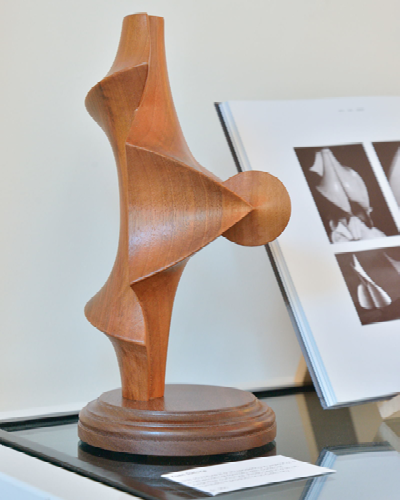August 1, 2015
AMEICO — a mecca of modernism with a loyal, international following — is currently holding an exhibition of works by Josef and Anni Albers called The Interaction of Form and Color.
To listen to his stories, one gets the impression Peter Kahane’s life has been lived one happy coincidence after another. “It’s amazing how blind one can be if you’re not in the mindset of something specific — you just don’t see things, even when they’re right in front of you, day after day after day,” he says, speaking of the building on 29 Church Street in New Milford that was to become to the new home for Kahane’s company, AMEICO. Boarded up for twenty years, the two-story brick and limestone building constructed in 1917 was a telephone exchange, built in the early days of the New England Telephone Company, SNET. Kahane had been pulling into the dirt driveway beside the boarded-up building to park his car and go to work down the street, never giving it a second glance. When in 2013 he began to search for a property to expand into, he pulled up to the building one morning, and had an “aha” moment.
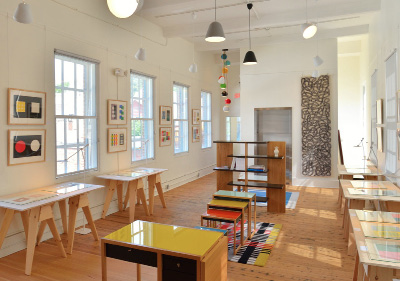
Shortly thereafter he purchased it from the town, and transformed the interior of the derelict building into a series of airy, elegant spaces for the multifarious needs of his growing company, AMEICO. The name is an acronym derived from “American Import-Export Company,” a simple way of describing the many projects in which AMEICO is engaged. Comprised of Kahane, his business partner Jeannette Purdy, his gallery and store manager Daniel Basiletti, and a support staff of roughly 10 people, “We are collectors, curators and purveyors of Modern design,” explains Basiletti, “Established in 1995, with just a few objects on a table at the trade shows and a deep appreciation for design and craftsmanship, AMEICO has grown into a much larger brand with a loyal, international following.”
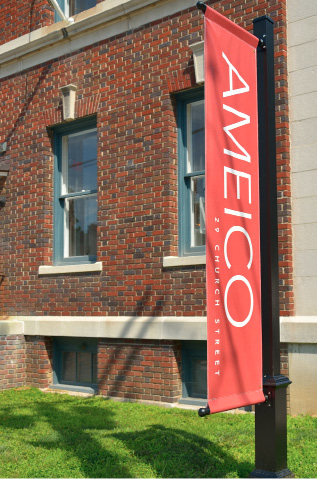
Entering the building on the ground floor, one finds a small, stylish retail shop fronting the AMEICO offices. A whole array of products and design objects are on offer: from affordable, mass-produced products to highly collectable niche-market pieces. Visitors will find the Kuen surface sculpture, a mathematically generated form which was a personal obsession of the artist Man Ray, beside a 1938 clock from Arne Jacobsen next to the work of contemporary Italian lighting designers. And they have a selection of stylish and affordable reading glasses by See Concept, trivets made of balled wool felt, by Vilt Van Ver, even a vegetable peeler – the “Star Peeler,” a version of a classic 1947 vegetable peeler by Alfred Neweczezal.

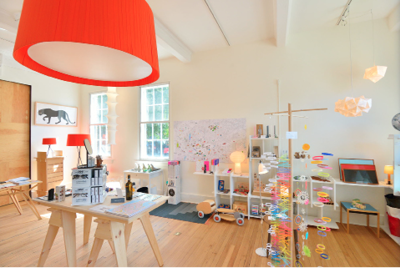
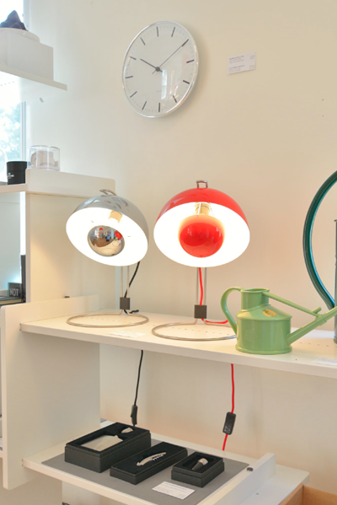
Upstairs, the long, light-filled, high-ceiling space is divided into a reading room at the front, an exhibition space and showroom, and an open-plan kitchen leading to a back deck – all open to the public. Sitting down to a large, oval table ringed by a collection of iconic designer chairs, I’m introduced to what looks like a little wooden robot toy. It is a maquette for a series of “re-edited” marionettes created by dadaist Sophie Taeuber-Arp in 1918 for a production of Carlo Gozzi’s 1762 Commedia D’ell Arte play Il Re Cervo (König Hirsch/The Stag King), adapted by Werner Wolff and René Morax.
Kahane has been working in consultation with curators at the Museum fur Gestaltung, in Zurich, Switzerland to reissue this little army of charming wooden puppets. The design team has been experimenting with a new type of connection between the articulated limbs of the puppets, and debating the elimination of marionette-strings. With this level of attention to craftsmanship, what becomes quickly apparent is the depth of passion and dedication Kahane devotes to all his projects.

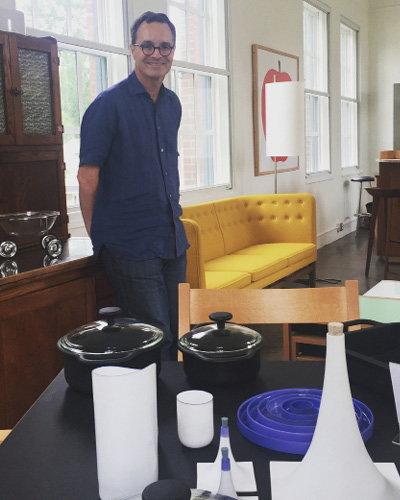
As the son of an art dealer who sold work from India and Southeast Asia to the likes of Nelson Rockefeller, Kahane says, “I grew up in a household where art was the big topic.” But Kahane is quick to note that, unlike his father, he is not a fine art dealer. He limits his purview to furniture, industrial and graphic design.
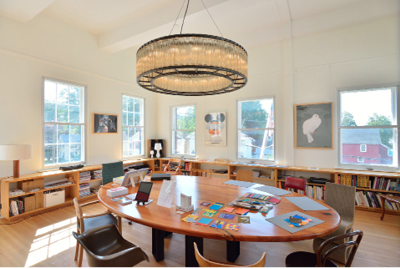
The reading room opens into the AMEICO exhibition space, where they have just mounted The Interaction of Form and Color, an exhibition of works by husband and wife team Josef and Anni Albers. Josef Albers (1888-1976) was a teacher and designer in the Bauhaus, the widely influential art school started in Weimar Germany in 1919. The Bauhaus and all those associated with it were to become foundational to Modernism, and among Albers’ many contributions was his seminal work on color theory, Interaction of Color.
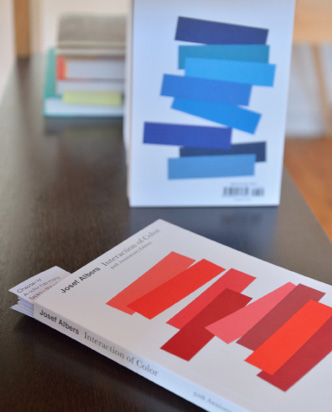
The show includes a selection of first edition folio prints from Albers’ book made by Yale University Press in 1963. The silkscreened pages are displayed on custom-made trestle tables, and in frames on the walls. While these hue-saturated diagrams are simply beautiful to look at, they are also instructional. On each page Albers presents a new color-based optical illusion. The book beautifully, and methodically puts forth an argument for the relativity of color and its perception, and understanding of which is fundamental to the work of designers and fine artists.

In her book On Designing, Anni Albers writes, “in a world as chaotic as the European world after World War I, any exploratory artistic work had to be experimental in a very comprehensive sense. What had existed had proved to be wrong… for a work which was oriented toward the future [we] had to start at the very beginning.”
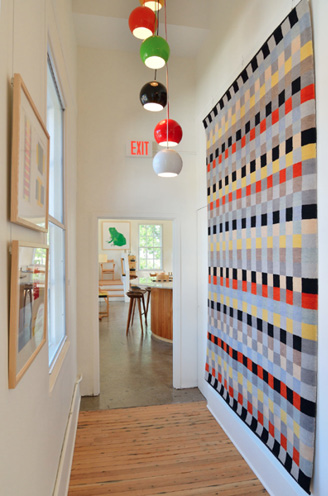
In addition to the prints and furniture in the show, there are a series of rugs and wall hangings made by josef’s wife and partner Anni Albers (1889 – 1994). She had been Josef’s student at the Bauhaus, and later, the head the Bauhaus’ Weaving Workshop. Her work in painting and textiles, and her extensive writings, also evinced a deep, thorough inquiry into craftsmanship, art and design appropriate to the new industrial age. Says Kahane of their work, “if you didn’t know it was two people, you might think it was all from the same oeuvre.” The Albers’ spent a lifetime working to better understand new ways of making, and new ways of seeing. And through this deep dedication to their craft they arrived at more universal truths – the lessons that we all learn life, in one way or another – until we finally see what has been right before us all along.
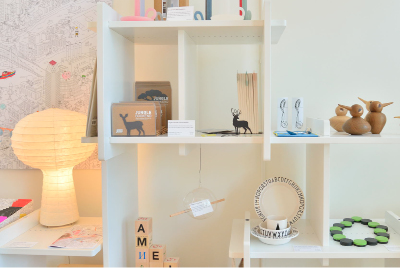
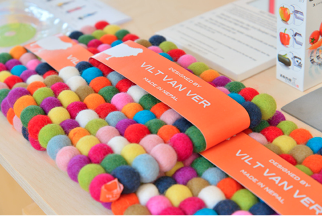
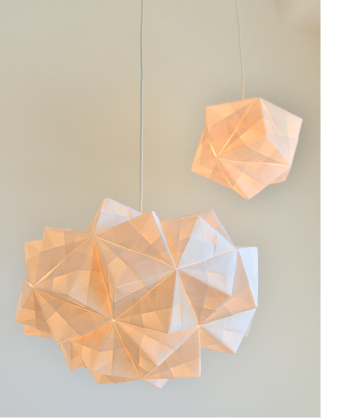
The Interaction of Light and Color will be on exhibit through October 31st, 2015.
AMEICO
29 Church Street
New Milford
860.354.8765
www.ameico.com





